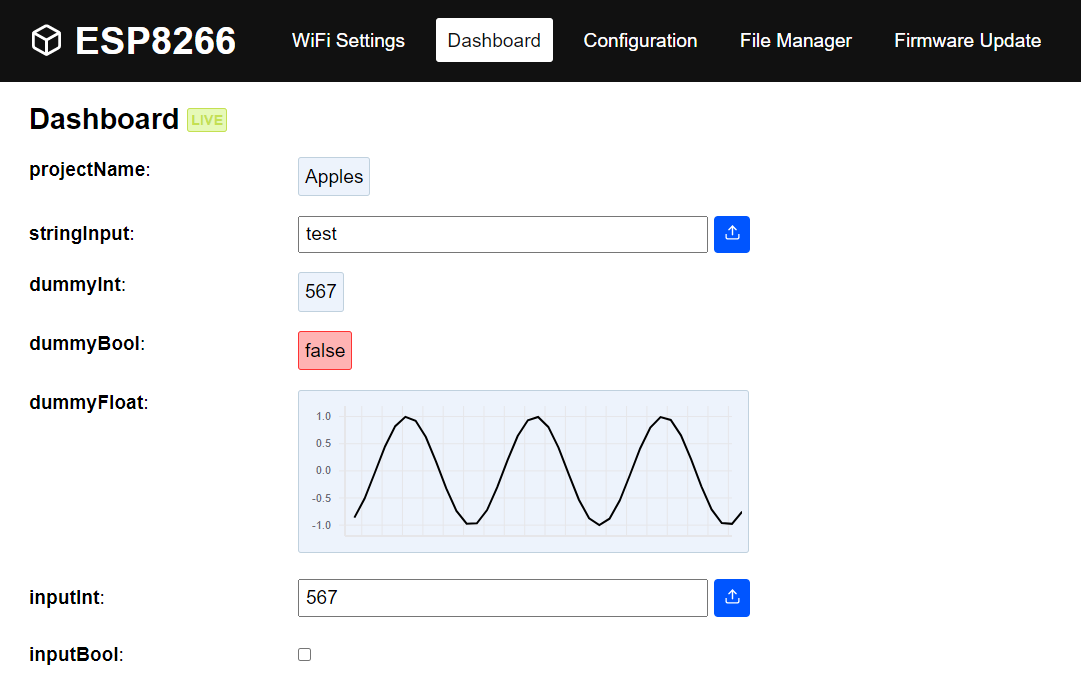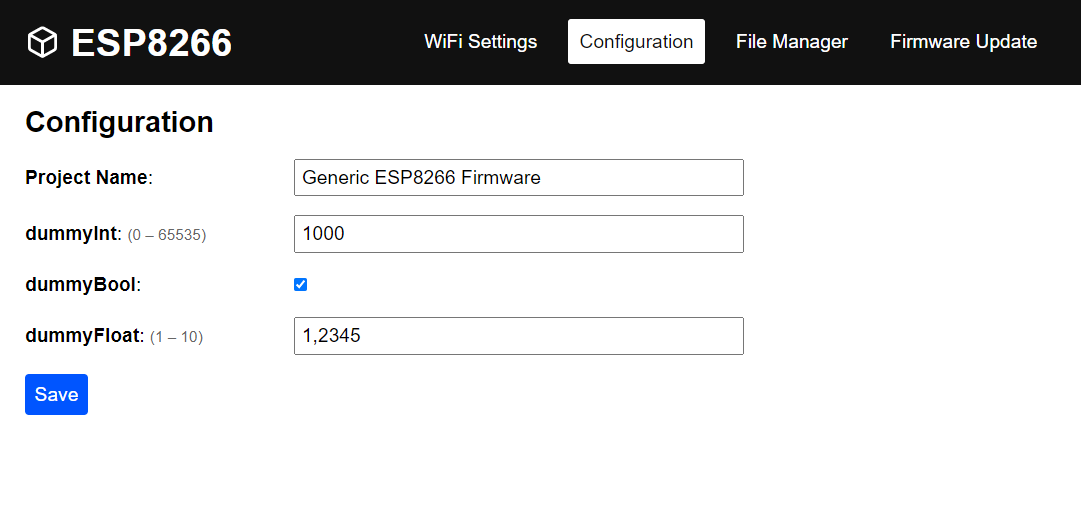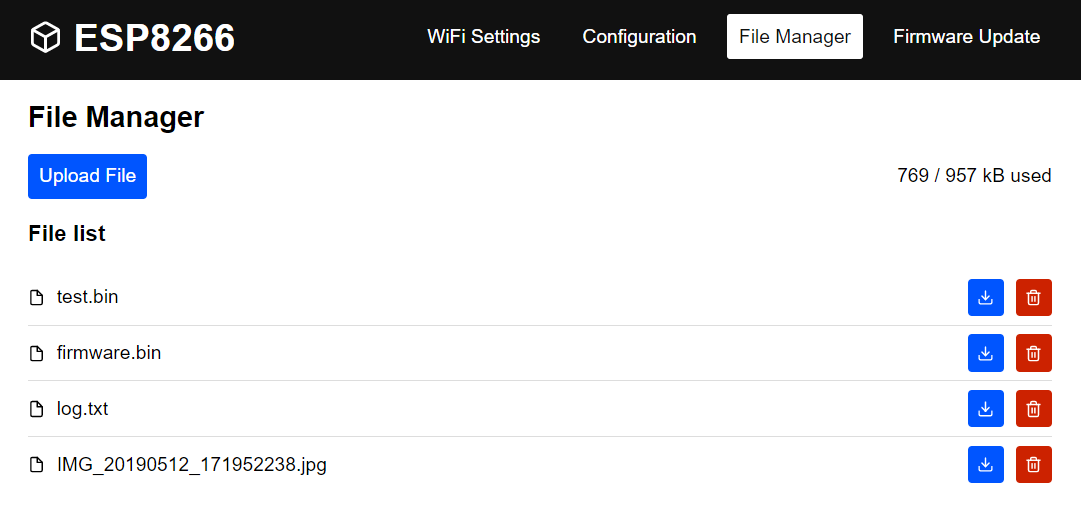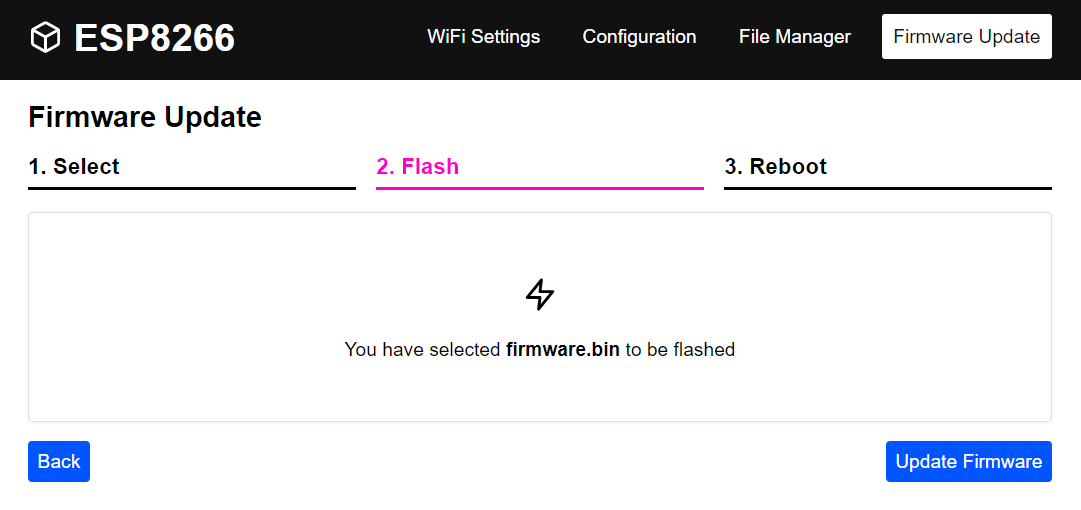The ESP8266 IoT Framework is a set of modules to be used as a starting point in new ESP8266 projects, implementing HTTPS requests, a React web interface, WiFi manager, configuration manager, live dashboard and OTA updates.
The unique advantage of this framework is that code generation at build time is used to provide different benefits. Code generation is used to dynamically generate a configuration struct and a live dashboard from JSON files, to incorporate the web interface into PROGMEM in the firmware and to bundle a full root certificate store in PROGMEM that allows the ESP8266 to do secure HTTPS requests to arbitrary URLs.
- Introduction
- Getting Started
- Installation Guide
- Web Server
- WiFi Manager
- Dashboard
- Configuration Manager
- File Manager
- HTTPS Requests
- OTA Updater
Details beyond the documentation can be found at maakbaas.com.
I would love to showcase some cool projects here that are based on this framework. Would you like to be featured with a picture and a link? contact me!
If you are new to PlatformIO, start with the installation guide. Otherwise, simply start a new project for your ESP8266, and add the following line to your platformio.ini file:
lib_deps = ESP8266 IoT FrameworkTake one of the examples as a starting point to develop your application.
The framework consists of five main parts. A web server including the interface it's serving, a WiFi manager, a configuration manager and classes for HTTP requests and OTA updates. The architecture of the framework is shown in the following diagram:
 Architecture of the framework shown in blue
Architecture of the framework shown in blue
The basic principles used in developing this framework are:
- The framework is built upon the ESP8266 Arduino libraries
- The framework does not include any functionality to control external hardware.
- The framework is fully self-contained for easy deployment. SPIFFS/LittleFS storage is not needed.
- There is a strict split between the ESP8266 application and the web interface through an API.
In short, the framework aims to be unobtrusive, easy to deploy, with a modern web interface that's easy to modify and expand for different projects :).
Note: The ESP32 is not supported by this framework right now, due to the reliance on BearSSL. BearSSL is part of the ESP8266 Arduino libraries, but not part of the ESP32 Arduino libraries. Also, many functionalities of this framework are supported by ESP-IDF for the ESP32. Therefore my recommendation would be to use ESP-IDF and I don't see enough added value in porting this framework.




